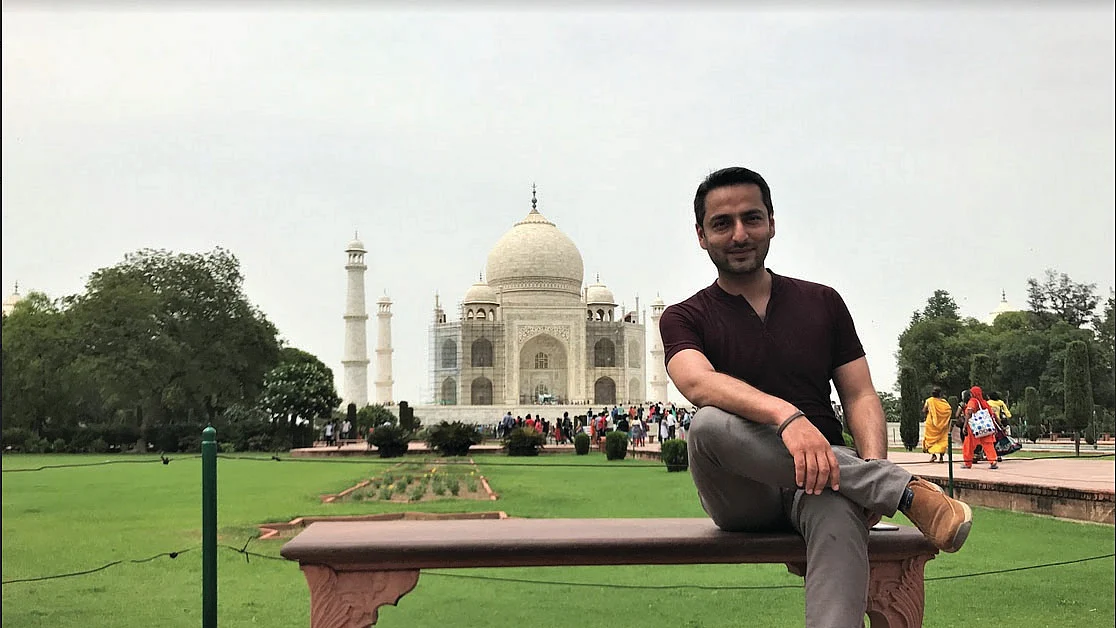Parting thoughts at our tryst with destiny: Times have certainly changed
The myriad stories one hears about Indians and Pakistanis opening their homes and hearts to strangers from the other side seem to belong to another age. For me, the number of such experiences was zero

My two-week trip to India was fulfilling beyond expectations. I got to meet my friends, old and new, virtual and actual, who pampered me on their home turf. Every place had a familiarity. A familiarity activated in a latent corner of my imagination.
My mind would race comparing attitudes, mannerisms, speech, smell and sound with Pakistan. It was not one-sided though. Indian friends asked how I compared their country with mine. Seven decades after Partition, there is still no escape from the original question: how is the other side doing after the split? As Jagjit Singh sang in one of his ghazals: 'Mujh se bichhar kar khush rehte ho / Meri tarah tum bhi jhoote ho' (You stay happy after parting with me, you say / Just like me, you too are lying).
India is an incredibly diverse nation, unmatchable in terms of the variety it contains, a melting pot of faiths and within those faiths, their various strands. In many ways, however, our two countries, despite being cut off from each other, have grown similarly over the past three generations.
A concern repeatedly raised in India during my visit was the rising wave of intolerance, instigated by the majoritarian politics of Hindu nationalism. This is not very different from what has happened in Pakistan in the past four decades. The seeds of fundamentalism sown in 1980s keep bearing fruits of conflict. Is India going on the same path?
A comment in a gathering of friends was insightful. One of them asked, “Which period in Pakistan’s history mirrors what is happening in today’s India?” “Zia ul Haq’s rule of 1980s.”, came the reply from another. I had no grounds to disagree.
Despite receiving news reports of young men being lynched on allegations of carrying beef, an Indian Muslim declared they were much better off in an India whose Constitution was ‘written’ by Dr. Babasaheb Ambedkar than they would have been in Pakistan. The
reality for everyone is different, though, depending on their identity.
When I told a friend from Srinagar how at various places I was mistaken as a Kashmiri, they told me that being thought of a Kashmiri could be more detrimental to my safety in today’s India than being known by my real Pakistani identity.
On the other hand, I met Pakistani Hindus and Sikhs, Sindhis and Pashtuns, at foreigners’ registration offices, seeking asylum in India. It is clear that the two states have failed to give their minorities a sense of security and belonging. The difference is only in the degree.
During my trip, I got to converse in English, Urdu/Hindi, Seraiki and Pashto. I met Pashto speakers from Balochistan and Seraiki speakers from Dera Ismail Khan. Despite the growing fanaticism on both sites, what remains unalterable is our intricately intermeshed history. Some may say that the current generation is not interested in the cottage industry created out of Partition-related themes, but to the eye that knows where to look, reminders of Partition are to be found everywhere.
There is a remarkable similarity even in our ailments and aspirations. For example, I noticed walls painted with Hindi advertisements offering cures for bawasir (haemorrhoids), masculine enhancement and private education. Pakistani wall ads target the same client base. I noticed plaques near hand pumps in Varanasi with names of dignitaries who inaugurated them. Same is the norm in Pakistan. We both love to warm our bodies with kadak chai all the year round and cool our throats with lassi in summers.
One could get carried away by the familiar surroundings and the similarity of our circumstances to forget how unreachable we remain to each other, despite being the closest neighbours. India and Pakistan have been independent countries for three quarters of a century. One wonders, however, if they could have lived together as one, had it not been divided by the British in 1947. Could the bloodshed and communal conflicts still have led to an even bloodier Partition had the British left the country intact in the hands of local leadership?
One can spend days and nights speculating these scenarios, but the current realities demand of the two neighbours to drop their animosities and together uplift the lot of their people. Because, as Jagjit Singh sang in the same ghazal: 'Tum tanha dunya se laro ge?/ Bachon si baatein karte ho' (You’ll face the world alone, you say/ How childlike is your talk!).
The myriad stories one has heard about Indians and Pakistanis opening their homes and hearts to strangers from the other side seemed to belong to another age. One has heard many anecdotes of strangers being invited for meals into homes and not being charged for goods and services. For me, the number of such experiences was zero.
Either times have changed, or my forbidding personality was to blame. What I experienced in India ranged from exceptional warmth and hospitality from friends I had known to being treated with suspicion by strangers. It included welcoming smiles and apprehensive questions. It included an outpour of bonhomie from Muslims and a cold shoulder from hotel receptionists.
The mood of the people and the regime at the helm is but a function of the current moment. My connection, however, is with the history spanning centuries, and with my South Asian identity that’s housed in Pakistan but incorporates Afghanistan and India.
India, a land where, on my first visit, I am greeted with “Bohot dinon baad aaye” (It took you so long to come back) cannot be foreign to me.
Follow us on: Facebook, Twitter, Google News, Instagram
Join our official telegram channel (@nationalherald) and stay updated with the latest headlines